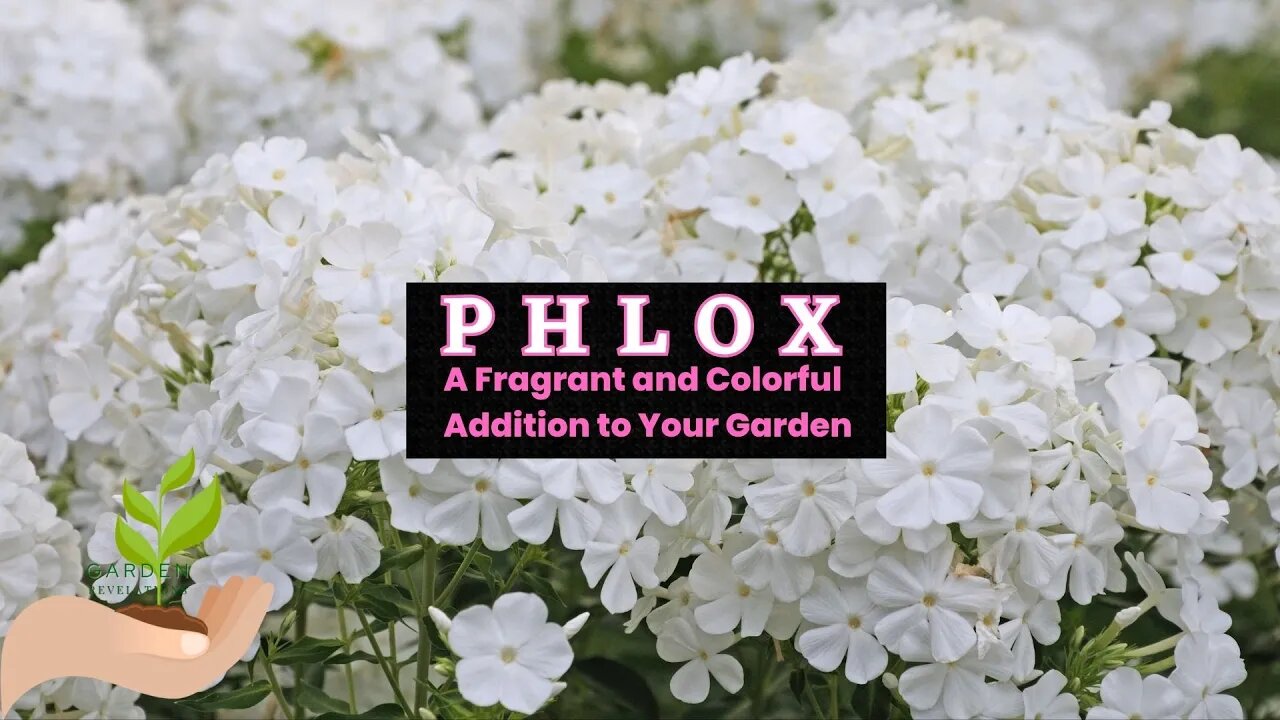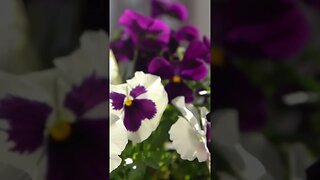Premium Only Content

PHLOX: A fragrant, tall or creeping addition to your flower garden
Phlox is a genus of flowering plants known for their vibrant, fragrant blooms and versatile growing habits. These perennials and annuals offer an impressive display of color, making them a popular choice among gardeners. In this article, we will explore the various aspects of phlox, including their appearance, growing zones, planting, care, and maintenance.
Colors and Appearance.
Phlox is available in a wide range of colors, including shades of pink, purple, red, white, and blue. The flowers are typically star-shaped and form dense clusters atop sturdy stems. Phlox leaves are usually lance-shaped or oval, and their arrangement varies depending on the species. The plants can grow anywhere from 6 inches to 4 feet tall, depending on the variety.
Growing Zones and Environmental Conditions.
Phlox species are native to North America and thrive in USDA plant hardiness zones 3 to 9, depending on the specific variety. These plants prefer well-draining, slightly alkaline soil with a pH of 6.5 to 7.5. While some species can tolerate partial shade, phlox generally grows best in full sun, requiring at least 6 hours of direct sunlight daily.
Latin Names.
The Phlox genus comprises several species, with some of the most commonly grown being:
Phlox paniculata (Garden Phlox).
Phlox subulata (Creeping Phlox).
Phlox drummondii (Annual Phlox).
Phlox divaricata (Woodland Phlox).
Pollinators You Will Attract.
Phlox attracts a variety of pollinators, including bees, butterflies, and hummingbirds. Their fragrant, nectar-rich flowers provide a valuable food source for these beneficial insects and birds, making phlox an excellent addition to a pollinator-friendly garden.
When to Plant Phlox.
The best time to plant phlox is in the spring or early fall, allowing the plants to establish a healthy root system before summer heat or winter cold.
Planting, Care, and Maintenance.
Prepare the planting site by loosening the soil to a depth of 12 to 15 inches and incorporating compost or other organic matter to improve drainage and fertility.
Space plants 18 to 24 inches apart to ensure proper air circulation and room for growth.
Water newly planted phlox regularly during the first growing season to establish a deep root system. Once established, phlox is relatively drought-tolerant and requires minimal watering.
Apply a layer of mulch around the plants to help conserve moisture, suppress weeds, and regulate soil temperature.
Phlox is generally low-maintenance, but removing spent flowers and cutting back the stems after blooming will promote a neater appearance and prevent self-seeding.
Fertilize phlox with a balanced, slow-release fertilizer in early spring to support robust growth and flowering.
To prevent spreading diseases, such as powdery mildew, ensure good air circulation and avoid overhead watering. If necessary, treat affected plants with an appropriate fungicide.
Divide perennial phlox every 3 to 4 years in the spring or early fall to maintain vigor and promote healthy growth.
Phlox is a charming addition to any garden, offering a delightful display of color and fragrance. Following the planting and care guidelines, you can create a thriving phlox garden that will enchant and delight for years. Their versatility and ability to attract pollinators make Phlox an excellent choice for gardeners looking to enhance their outdoor spaces' beauty and ecological value. Whether you grow garden phlox, creeping phlox, or one of the many other varieties, these captivating plants will undoubtedly become a cherished part of your garden landscape.
As an Amazon Associate I earn from qualifying purchases.
PURCHASE PHLOX - TALL PHLOX MIX VALUE BAG (6) https://amzn.to/3UlSEHU
Connect with us:
Facebook: https://www.facebook.com/TayloesLawnCare
Web: https://www.tayloeslawncare.com
MeWe: https://mewe.com/p/diyhomegarden
Image and music licensed via Canva Pro
-
 0:56
0:56
Garden Revelations
1 year agoPansies: The perfect way to add color to a fall garden (lasting to early winter in North Carolina)
101 -
 1:26:16
1:26:16
Michael Franzese
13 hours agoMenendez Brothers Denied Parole – Newsom Holds Their Fate
64.3K13 -
 LIVE
LIVE
I_Came_With_Fire_Podcast
12 hours agoSecret Origins of Transhumanism & The New Atlantis
473 watching -
 LIVE
LIVE
GritsGG
1 day ago36 Hour Stream! Most Wins 3420+ 🧠
1,512 watching -
 1:12:40
1:12:40
Wendy Bell Radio
8 hours agoPet Talk With The Pet Doc
36.4K26 -
 LIVE
LIVE
FusedAegisTV
13 hours agoStreet Fighter 6 FINALS, CS2 Semifinals | $1,250,000 | Riyadh, Saudi Arabia EWC 2025 !estv
140 watching -
 40:42
40:42
SouthernbelleReacts
1 day ago $0.06 earned😂 American Pie (1999) Reaction | Iconic Teen Comedy, High School Chaos & 90s Nostalgia 🥧
18.7K2 -
 LIVE
LIVE
LumpyPotatoX2
3 hours agoBecome a HellDiver Today - #RumbleGaming
161 watching -

Midnight In The Mountains
5 hours agoGaming w/ PER·SE·VER·ANCE | Sassy Saturday Fortnite | with the Midnights!
17.6K2 -
 LIVE
LIVE
shyboyking
3 hours agoThe Bots Of The Bots !!!😎
141 watching